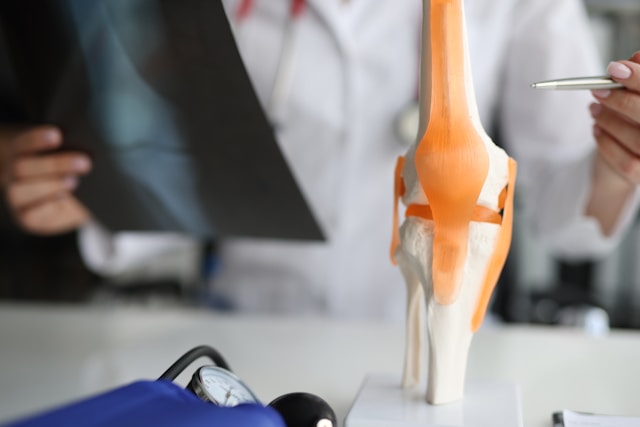
Orthopedic care has entered an era defined by Precision Orthopedic Techniques, where data and advanced technology guide every incision, implant, and intervention. As patients demand less invasive approaches and faster return to daily life, surgeons integrate high-resolution imaging, computer navigation, robotic assistance, and biologic therapies to enhance accuracy and strength. This 850-word exploration examines four pivotal developments shaping modern orthopedics and highlights trends that will drive future innovations in musculoskeletal treatment.
Early Innovations in Precision Orthopedic Techniques
The journey toward refined Precision Orthopedic Techniques began over a century ago. In the late 1800s, Dr. Hugh Owen Thomas introduced plaster casts and traction splints, establishing standardized methods to reliably align fractures. Although these tools improved outcomes, surgeons depended on tactile feedback and two-dimensional X-rays. During World War I, pioneers such as Sir Robert Jones experimented with metal plates and screws for internal fixation, demonstrating that stable hardware could maintain bone alignment more precisely than external methods. These breakthroughs reduced immobilization time and set the stage for later advances.
By the mid-20th century, sterile surgical environments and antibiotics mitigated infection risks, allowing more complex internal reconstructions. Orthopedic teams began correlating intraoperative findings with preoperative radiographs, refining fracture alignment and joint restoration. These early experiments in hardware design and surgical protocol laid the groundwork for today’s Precision Orthopedic Techniques, proving that tailored implants and meticulous planning yield stronger repairs and fewer complications.
Imaging and Navigation Advances in Precision Orthopedic Techniques
The adoption of real-time imaging revolutionized surgical precision. Fluoroscopy provided intraoperative X-ray guidance, enabling surgeons to verify implant placement instantly rather than relying on postoperative film. Soon, computed tomography (CT) scans offered three-dimensional reconstructions of bone and soft tissue, transforming how surgeons visualize complex anatomy before entering the operating room.
Building on these tools, computer-assisted navigation emerged in the 1990s. Navigation platforms display instrument trajectories on a monitor with sub-millimeter accuracy by merging CT or MRI data with tracking sensors. Surgeons can adjust screw angles in spinal fusion or confirm resection margins in tumor excisions, greatly reducing the risk of misplacement. As a result, modern Precision Orthopedic Techniques leverage preoperative planning and intraoperative verification, ensuring high-fidelity execution of complex procedures and minimizing damage to surrounding structures.
Robotic and Power-Assisted Precision Orthopedic Techniques
Power instruments and robotics have further elevated the precision and efficiency of orthopedic surgery. Advanced saws, burrs, and ultrasonic devices allow surgeons to perform bone cuts smoothly and rapidly, preserving soft tissues and reducing bleeding. These tools have shortened operative times and improved consistency across procedures.
Meanwhile, robotic platforms such as MAKO™ for joint replacement and ROSA™ for spinal alignment represent the zenith of Precision Orthopedic Techniques. These systems translate preoperative surgical plans into precise, automated actions. Haptic feedback guides the surgeon’s hand, preventing deviations beyond predetermined boundaries, while integrated optical trackers confirm instrument position in real time. In total knee arthroplasty, robotic assistance routinely achieves alignment within one to two degrees of the mechanical axis, significantly enhancing implant longevity and functional outcomes. These innovations deliver power and pinpoint accuracy in bone preparation and implant placement by uniting human expertise with robotic consistency.
Minimally Invasive and Biologic Precision Orthopedic Techniques
Patient preference for minimal scarring and swift recovery has driven the adoption of arthroscopic and percutaneous methods under the umbrella of Precision Orthopedic Techniques. Arthroscopy uses small portals and high-definition cameras to repair meniscal tears, reconstruct ligaments, or debride cartilage without large incisions. This approach preserves soft tissue integrity, reduces postoperative pain, and expedites rehabilitation protocols.
Likewise, image-guided intramedullary nailing and percutaneous pinning stabilize long-bone fractures through tiny incisions. Surgeons employ fluoroscopy or navigation to guide reamers and screws along the optimal bone corridor, allowing immediate weight-bearing in many cases. These minimally invasive strategies demonstrate how Precision Orthopedic Techniques now marry mechanical exactitude with tissue-sparing access, offering significant benefits in trauma and elective settings.
Concurrently, regenerative medicine complements mechanical interventions. Platelet-rich plasma (PRP) and bone morphogenetic proteins (BMPs) are delivered to enhance tendon, ligament, and bone healing. Emerging tissue engineering approaches use stem cell–sed scaffolds to regenerate cartilage or bone defects in situ. When these biologic agents are applied through robotically guided instruments or custom cutting guides, patients receive mechanically precise and biologically potent treatments—a hallmark of next-generation Precision Orthopedic Techniques.
Rehabilitation and Patient Outcomes
Precision Orthopedic Techniques have evolved from manual bone-setting and rudimentary X-rays to sophisticated, data-driven, robotically assisted, and biologically enhanced interventions in just over a century. Early internal fixation concepts matured into advanced hardware systems supported by sterile protocols and imaging. Subsequent navigation and robotic platforms elevated accuracy to sub-millimeter levels, while power tools accelerated bone preparation. Minimally invasive portals and regenerative therapies prioritize patient recovery and tissue healing.
Looking ahead, artificial intelligence will integrate with surgical planning to predict patient-specific implant sizes, anticipate complications, and refine intraoperative guidance. Additive manufacturing will produce bespoke implants matched to anatomical geometries. As these technologies converge, orthopedic surgeons will wield an ever-expanding toolkit of Precision Orthopedic Techniques, delivering personalized, powerful, and predictable solutions for musculoskeletal health.